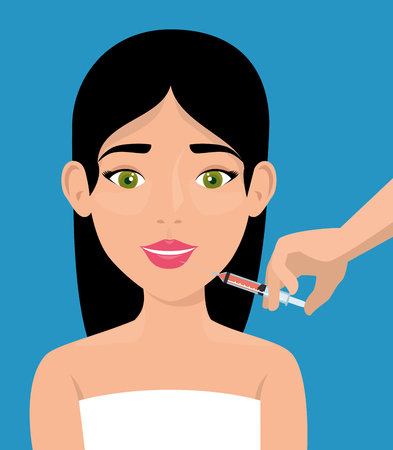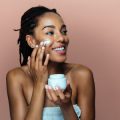1. Understanding Waxing: What It Really Is
Waxing is a popular method of hair removal that pulls hair out from the root, leaving your skin smooth for weeks. Unlike shaving, which only cuts hair at the surface, waxing removes the entire hair follicle, resulting in slower regrowth and often finer hair over time.
How Does Waxing Work?
The process starts with applying a thin layer of warm wax to the desired area. A cloth or paper strip is pressed onto the wax, then quickly pulled off in the opposite direction of hair growth. This pulls the hairs out from the root. Some salons also offer hard wax, which doesn’t require strips and is ideal for sensitive areas.
Types of Waxing Services Available in the U.S.
| Service Type | Description | Common Areas |
|---|---|---|
| Soft Wax (Strip Wax) | Wax applied thinly and removed with a cloth strip. | Legs, arms, back, chest |
| Hard Wax | Wax hardens on skin and is removed without a strip; gentler on sensitive skin. | Face, underarms, bikini area |
| Sugaring | A natural paste of sugar, lemon, and water; used like wax but less sticky. | Bikini line, face, arms, legs |
| Bikini/Brazilian Wax | Removes hair from the bikini line or more intimate areas. | Bikini area, full Brazilian includes all pubic hair |
| Facial Waxing | Targets small facial areas. | Eyebrows, upper lip, chin, cheeks |
| Body Waxing | Larger body areas for smooth skin. | Back, chest, legs, arms |
Why Choose Waxing?
Many Americans choose waxing for its long-lasting results and smooth feel. It’s available at most beauty salons and spas across the U.S., with options to fit every need—from quick eyebrow shaping to full-body treatments. Whether you’re getting ready for summer or just want a low-maintenance routine, waxing can be a great choice when done by trained professionals.
2. Common Waxing Myths and Where They Came From
Waxing is a popular hair removal method in the United States, but it’s also surrounded by a lot of myths and misunderstandings. Many people hear these myths from friends, social media, or even TV shows, and they can make waxing seem scarier or more complicated than it really is. Let’s take a look at some of the most common misconceptions about waxing in American culture and see where these ideas actually came from.
Popular Waxing Myths in American Culture
| Myth | What People Believe | Where It Came From |
|---|---|---|
| Waxing makes hair grow back thicker and darker | Many think that after waxing, hair will return looking thicker or darker than before | This idea often spreads through word-of-mouth and personal anecdotes, but it’s not backed by science |
| You have to let your hair grow super long before waxing | Some believe you need to wait until your hair is very long for waxing to work effectively | This myth may have started because waxing does need a little length to grip, but not as much as many think |
| Waxing is unbearably painful | The belief that waxing is always excruciating keeps some people from trying it at all | TV shows, movies, and viral videos often exaggerate reactions for comedic effect, making people think the pain is worse than it usually is |
| Waxing causes permanent skin damage | People worry that regular waxing will damage their skin forever | Misinformation online and scary stories can blow rare allergic reactions or mistakes out of proportion |
| You can’t wax sensitive areas like the face or bikini line safely | Some assume waxing delicate areas is dangerous or impossible without injury | This comes from old-school thinking or negative experiences with improper techniques; modern waxes are designed for sensitive skin |
| You have to avoid all sun exposure after waxing | The idea that any sunlight will harm freshly waxed skin makes people overly cautious | This likely started as good advice taken to the extreme—while some care is needed, total avoidance isn’t necessary with proper protection |
How These Myths Spread in America
A lot of these myths become “common knowledge” through pop culture references, beauty blogs, and casual conversations among friends. Social media platforms like TikTok and Instagram also play a big role in spreading both helpful tips and misinformation. Sometimes, one person’s bad experience gets shared widely and becomes a general rule—even if it’s not true for everyone.
The Role of Media and Word-of-Mouth
Sitcoms and movies often show funny but exaggerated waxing scenes (think “The 40-Year-Old Virgin”), which make people think every waxing session will be dramatic. Beauty magazines sometimes repeat outdated advice without checking newer facts. Even well-meaning friends might pass along tips that sound right but aren’t scientifically accurate.

3. Does Waxing Make Hair Grow Back Thicker?
Debunking the Myth
One of the most common concerns among clients in the U.S. is whether waxing causes hair to grow back thicker or coarser. Lets set the record straight: waxing does not make your hair grow back thicker. In fact, this myth has been debunked by dermatologists and scientific studies.
What Really Happens After Waxing?
Waxing removes hair from the root, which means the new hair that grows in has a tapered tip—just like the original hair before it was ever shaved or cut. This is different from shaving, which slices hair at the surface and leaves a blunt edge, making regrowth feel stubbly and thick.
| Hair Removal Method | How It Affects Regrowth | Sensation/Appearance |
|---|---|---|
| Waxing | Removes hair from the root; new growth has a soft, tapered tip | Softer, finer appearance |
| Shaving | Cuts hair at skin level; new growth has a blunt edge | Feels coarser and looks thicker |
The Science Behind It
Your hairs texture, color, and thickness are determined by genetics—not by how you remove it. No clinical evidence supports the idea that waxing changes these factors. Over time, many people notice that their hair actually grows back finer and sparser after regular waxing sessions because repeated removal can weaken the hair follicle.
Key Takeaway for U.S. Clients
If youre considering waxing but worry about thicker regrowth, rest easy! The reality is that waxing leads to softer and sometimes even less noticeable hair over time. So, go ahead and book that appointment with confidence.
4. Waxing and Skin Health: Fact Versus Fear
Is Waxing Really Bad for Your Skin?
If you’ve ever worried that waxing will ruin your skin, you’re not alone. There’s a lot of misinformation out there—let’s separate the myths from the facts. Many people believe waxing always causes irritation, leads to sagging skin, or can’t be safe for sensitive types. In reality, with the right technique and aftercare, waxing is a safe hair removal method that can even benefit your skin by exfoliating dead cells.
Common Myths About Waxing and Skin Health
| Myth | Fact |
|---|---|
| Waxing causes permanent skin damage | When performed correctly, waxing only affects the top layer of dead skin cells and doesn’t cause lasting harm. |
| Waxing makes your skin sag over time | No scientific evidence supports this. Proper technique prevents unnecessary pulling on the skin. |
| It’s unsafe for sensitive skin | Many wax formulas are designed for sensitive skin. Patch testing and professional services lower risk of reactions. |
| Waxing always leads to ingrown hairs | Ingrown hairs can happen with any hair removal method. Good exfoliation and aftercare help prevent them. |
Tips for Safe and Effective Aftercare (Based on U.S. Skincare Standards)
1. Cleanse Gently After Waxing
Avoid harsh soaps or scrubs. Use a gentle cleanser to remove residue without irritating your skin.
2. Moisturize Regularly
Apply a fragrance-free, non-comedogenic moisturizer like Cetaphil or CeraVe to soothe and hydrate the area.
3. Avoid Sun Exposure
Your skin is more sensitive after waxing. Stay out of direct sunlight for at least 24 hours, and use broad-spectrum SPF if you must go outside.
4. Skip Hot Showers & Tight Clothes
Hot water and tight clothing can irritate freshly waxed skin. Choose lukewarm showers and loose-fitting clothes for a day or two.
5. Exfoliate Between Sessions
A few days after waxing, gently exfoliate with a soft washcloth or mild scrub to prevent ingrown hairs—just don’t overdo it!
5. Choosing the Right Waxing Service in the U.S.
How to Find a Reputable Waxing Salon or Esthetician
When it comes to waxing, not all salons are created equal. Its important to choose a professional who follows safe and hygienic practices. Here are some tips to help you find a reputable waxing salon or esthetician in the United States:
- Check Reviews: Look for reviews on platforms like Google, Yelp, and social media. Pay attention to comments about cleanliness, professionalism, and customer satisfaction.
- Certification Matters: Make sure your esthetician is licensed by the state. Most states require specific training and certification for waxing services.
- Ask About Hygiene Practices: Don’t hesitate to ask how tools are sanitized and if gloves are worn during waxing procedures.
- Consultation is Key: A good salon will offer a brief consultation before your first appointment to discuss your skin type, allergies, and any concerns.
What to Expect During Your Appointment
If you’re new to waxing, knowing what happens at a typical appointment can help ease your nerves. Here’s a quick overview:
| Step | What Happens |
|---|---|
| Arrival & Check-in | You’ll check in at the front desk and complete any necessary forms. |
| Consultation | Your esthetician will ask about allergies, medications, and previous experiences with waxing. |
| Cleansing | The area to be waxed is cleaned and prepped to minimize irritation. |
| Wax Application | The esthetician applies warm or hard wax depending on the area and your skin type. |
| Hair Removal | The wax is quickly removed, taking hair with it. |
| Soothe & Aftercare | A soothing lotion or gel is applied, along with aftercare instructions. |
Questions You Can Ask Before Your Waxing Appointment
- What type of wax do you use?
- How do you sanitize your tools?
- Can I see your license or certification?
- What should I do to prepare for my appointment?
- Do you offer aftercare products or advice?
Red Flags to Watch Out For
- Lack of visible licenses or certifications in the salon
- Poor hygiene (dirty tools, wax pots with double-dipping)
- No consultation or questions about your medical history
- Painful or rushed service without proper care
By doing a little research and asking the right questions, you can enjoy a comfortable and safe waxing experience that leaves you feeling confident and cared for.


